
The Majestic Colca Canyon: Peru's Trekking Wonderland
Experience the awe-inspiring beauty and rich cultural heritage of Colca Canyon, one of the world's deepest canyons, on a trek through Peru's Andean landscapes.
Colca Canyon in Peru is one of the deepest canyons in the world, almost twice as deep as the Grand Canyon. This stunning natural wonder is a haven for trekkers and nature lovers, offering breathtaking views, diverse wildlife, and an opportunity to experience traditional Andean culture. The trek through Colca Canyon takes you through picturesque landscapes, including terraced fields, rivers, and quaint villages. Along the way, you might spot the majestic Andean condor soaring above, as well as other native wildlife. The region is also home to hot springs where you can relax and rejuvenate after a day of trekking. One of the highlights of the Colca Canyon trek is visiting the traditional villages where the local people still wear colorful, hand-woven clothing and maintain their ancient customs. You can also explore pre-Inca archaeological sites and learn about the rich history of the region. The trek can be challenging, but the stunning scenery and the chance to immerse yourself in the local culture make it a truly rewarding experience.
Local tips in Colca Canyon Trek
- Be prepared for high altitude; acclimatize in Arequipa before beginning your trek.
- Bring warm clothing as temperatures can drop significantly at night.
- Hire a local guide to enhance your experience and ensure you don't miss any hidden gems.
- Make sure to carry enough water and snacks, as facilities can be sparse along the trek.
- Visit the Cruz del Condor viewpoint early in the morning for the best chance to see condors.
The Majestic Colca Canyon: Peru's Trekking Wonderland
Colca Canyon in Peru is one of the deepest canyons in the world, almost twice as deep as the Grand Canyon. This stunning natural wonder is a haven for trekkers and nature lovers, offering breathtaking views, diverse wildlife, and an opportunity to experience traditional Andean culture. The trek through Colca Canyon takes you through picturesque landscapes, including terraced fields, rivers, and quaint villages. Along the way, you might spot the majestic Andean condor soaring above, as well as other native wildlife. The region is also home to hot springs where you can relax and rejuvenate after a day of trekking. One of the highlights of the Colca Canyon trek is visiting the traditional villages where the local people still wear colorful, hand-woven clothing and maintain their ancient customs. You can also explore pre-Inca archaeological sites and learn about the rich history of the region. The trek can be challenging, but the stunning scenery and the chance to immerse yourself in the local culture make it a truly rewarding experience.
When is the best time to go to Colca Canyon Trek?
Iconic landmarks you can’t miss
Colca Canyon
Discover the stunning Colca Canyon, a deep natural wonder in Peru, famed for its dramatic landscapes, condors, and vibrant local culture.
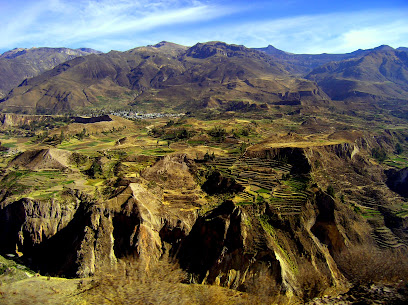
Mirador Cruz del Cóndor
Experience the stunning beauty of Colca Canyon and watch majestic Andean condors soar at Mirador Cruz del Cóndor, a must-visit observation deck in Peru.
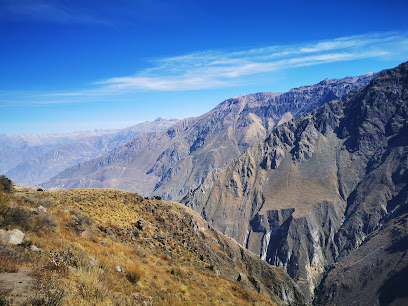
Plaza De Armas De Chivay
Discover the vibrant charm of Plaza De Armas De Chivay, a cultural hub in the heart of Peru with stunning mountain views and delicious local cuisine.

Sangalle
Experience the tranquility and natural beauty of Sangalle, a captivating park nestled in the heart of Colca Canyon, Peru.

Tradicion Colca
Experience the charm of Tradicion Colca, your perfect base for exploring the breathtaking Colca Canyon in the heart of Peru.

Uyo Uyo
Explore Uyo Uyo, an archaeological wonder in Peru, where ancient Incan ruins meet breathtaking landscapes for an unforgettable cultural experience.
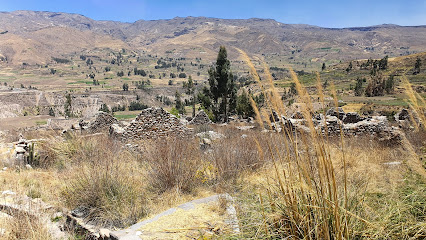
Rio Colca
Explore the breathtaking Rio Colca, a majestic river in Peru, perfect for adventure seekers and nature lovers alike with stunning landscapes and rich culture.
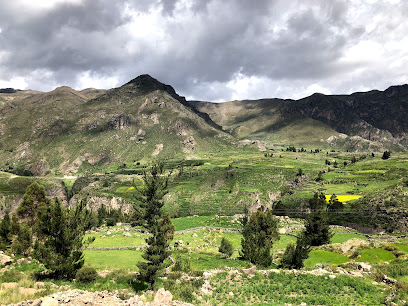
Colca Zip-Lining
Experience the thrill of zip-lining in the breathtaking Colca Canyon, surrounded by nature's beauty and adventure at every turn.

Colca Canyon Trekking Edgar
Explore the stunning landscapes of Colca Canyon with Edgar's expert trekking tours, perfect for adventurers and nature lovers seeking unforgettable experiences.
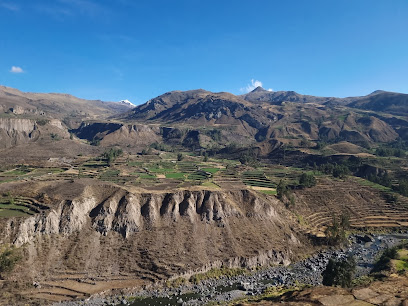
Cañón de Cotahuasi
Explore the breathtaking beauty and rich culture of Cañón de Cotahuasi, one of the deepest canyons in the world, nestled in the heart of the Peruvian Andes.
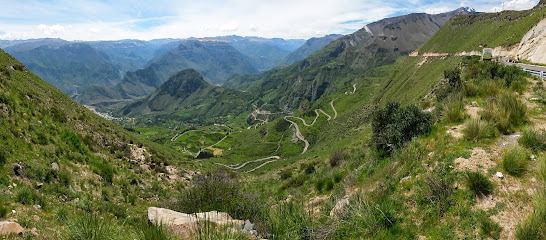
ColcaTrek
Discover the wonders of Colca Canyon with ColcaTrek – memorable tours, breathtaking landscapes, and rich cultural experiences await in Peru's natural treasure.
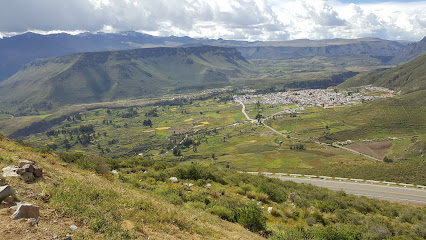
Trek The Colca
Explore the breathtaking beauty of Colca Canyon with Trek The Colca, where adventure and cultural experiences await every traveler.

Colca Trek Lodge
Discover the magic of Colca Canyon at Colca Trek Lodge, your perfect gateway to adventure and relaxation in the Andes.

Mirador de San Miguel
Experience breathtaking vistas and serene hiking trails at Mirador de San Miguel, a premier viewpoint in the heart of Colca Canyon, Peru.

Huarancante
Discover the breathtaking beauty of Huarancante, a majestic mountain peak in Peru offering stunning views and rich cultural experiences.

Unmissable attractions to see
Sabandía mill
Explore the historic Sabandía Mill, nestled in the stunning landscapes of Arequipa, Peru, where history and nature beautifully converge.

Plaza De Armas De Chivay
Experience the cultural heart of Chivay at Plaza De Armas, a serene park surrounded by stunning mountains and vibrant local traditions.
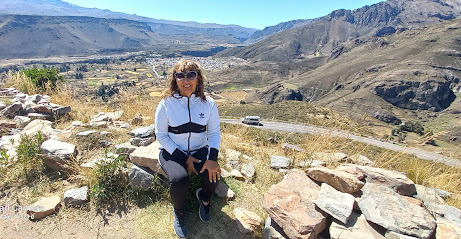
Reserva Paisajística Subcuenca del Cotahuasi
Discover the stunning beauty and rich biodiversity of Reserva Paisajística Subcuenca del Cotahuasi, a true gem for nature lovers in Peru.

Sangalle
Experience the breathtaking beauty of Sangalle, a serene oasis in Colca Canyon, perfect for hiking, relaxation, and nature exploration.
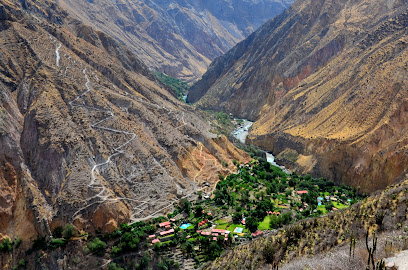
Capua waterfall
Experience the stunning beauty of Capua Waterfall in Yura Viejo, Peru – a tranquil escape into nature's embrace.
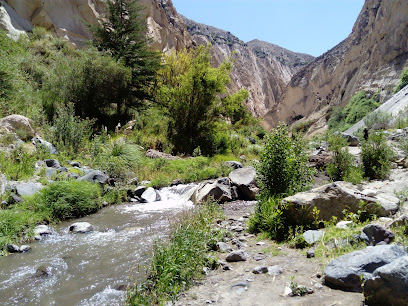
Uyo Uyo
Explore Uyo Uyo: An Enchanting Archaeological Site in the Heart of Peru, Where History Meets Natural Beauty.

Catarata De Sipia Cotahuasi
Explore the breathtaking beauty of Catarata De Sipia Cotahuasi, a hidden waterfall gem in Peru's stunning Cotahuasi Canyon, perfect for nature lovers.
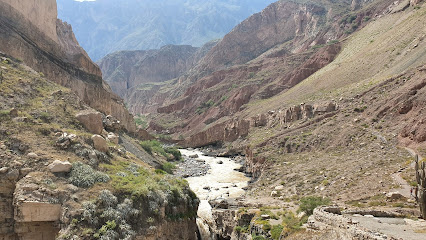
Puente Inca
Experience the captivating beauty and rich history of Puente Inca, an iconic bridge nestled in the breathtaking Colca Valley of Peru.
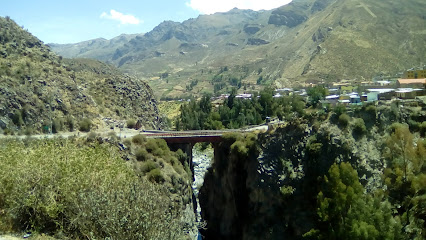
Planetarium and Observatory Colca
Experience the wonders of the universe at the Planetarium and Observatory Colca in Chivay, a stellar destination for stargazers and astronomy enthusiasts.
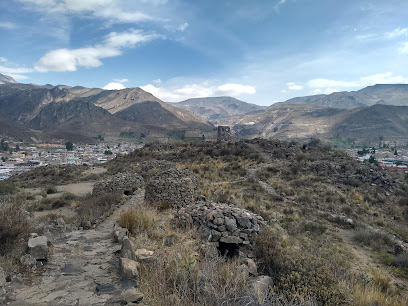
Colca Zip-Lining
Experience the thrill of zip-lining over the breathtaking landscapes of Colca Canyon, one of Peru's most spectacular natural wonders.
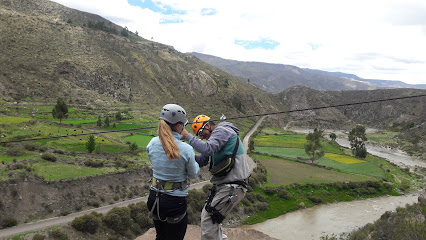
Ovalo el condor
Experience the thrill of off-roading at Ovalo el Condor, a breathtaking adventure hotspot in the heart of the Peruvian Andes.
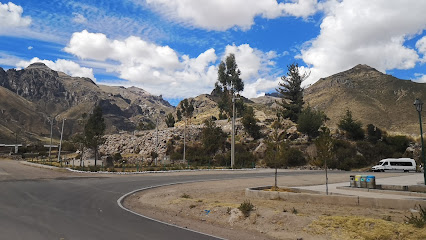
Mirador de Achachihua
Experience the breathtaking views of the Colca Canyon at Mirador de Achachihua, a stunning natural viewpoint in Peru.
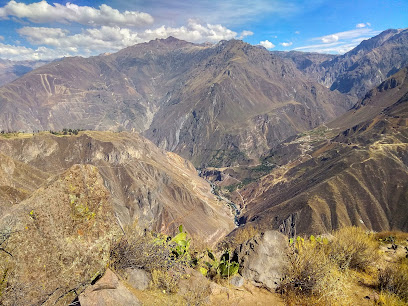
Cañón de Cotahuasi
Explore Cañón de Cotahuasi, Peru's breathtaking canyon, and immerse yourself in its stunning landscapes and rich cultural heritage.
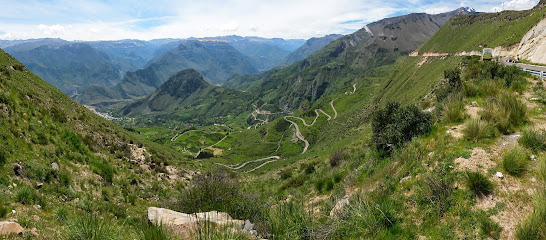
Trek The Colca
Explore the breathtaking Colca Canyon with Trek The Colca - your gateway to adventure and natural beauty in Peru.
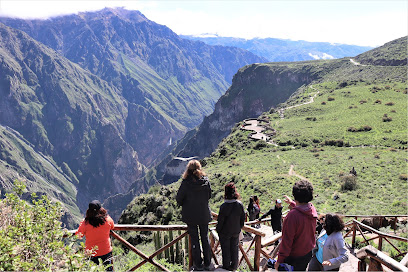
Mirador de San Miguel
Experience breathtaking views at Mirador de San Miguel, the ultimate hiking destination in Colca Canyon, Peru, where nature's beauty unfolds.

Essential places to dine
Colca Canyon
Discover Colca Canyon: A stunning natural landmark in Peru offering breathtaking views, rich wildlife experiences, and cultural immersion.

RESTAURANT URINSAYA
Experience authentic Peruvian cuisine in Chivay at Restaurant Urinsaya - where every dish tells a story.

Rest LOS PORTALES DE CHIVAY
Experience authentic Peruvian cuisine at Rest Los Portales de Chivay - where flavor meets culture in every bite.
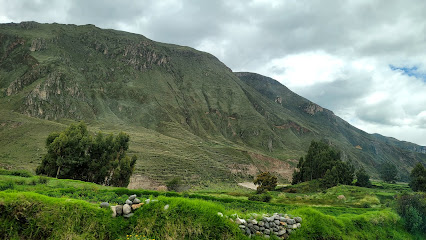
Pachamama Home
Experience authentic Peruvian hospitality at Pachamama Home—your perfect base for exploring Cabanaconde and Colca Canyon.

Restaurant Incafe
Savor authentic Peruvian flavors at Restaurant Incafe – a culinary gem offering traditional dishes in a warm and inviting atmosphere.
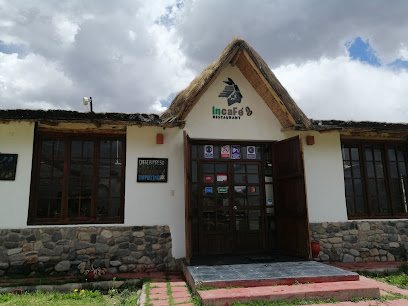
Las Casitas, A Belmond Hotel, Colca Canyon
Discover luxury and nature at Las Casitas, A Belmond Hotel in breathtaking Colca Canyon – an unforgettable retreat for discerning travelers.

Tradicion Colca
Experience authentic Peruvian hospitality at Tradicion Colca while exploring the breathtaking landscapes of Colca Canyon.

El Refugio
Experience comfort and hospitality at El Refugio, your gateway to exploring the breathtaking landscapes of Chivay and Colca Canyon.
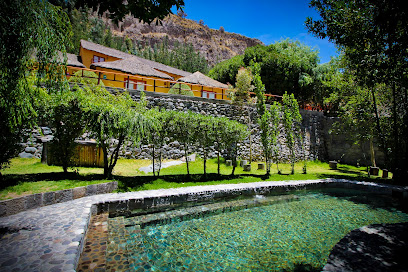
Restaurant Turístico Colca
Experience authentic Peruvian cuisine amidst breathtaking views at Restaurant Turístico Colca in Chivay.
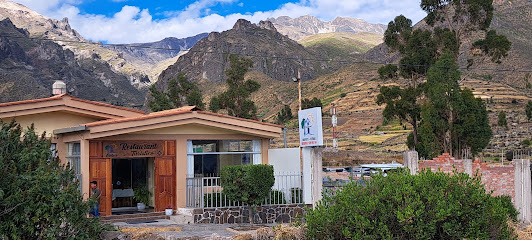
Restaurante Turístico Q'apaqñan
Experience authentic Peruvian cuisine at Restaurante Turístico Q'apaqñan in Chivay - where every dish tells a story.
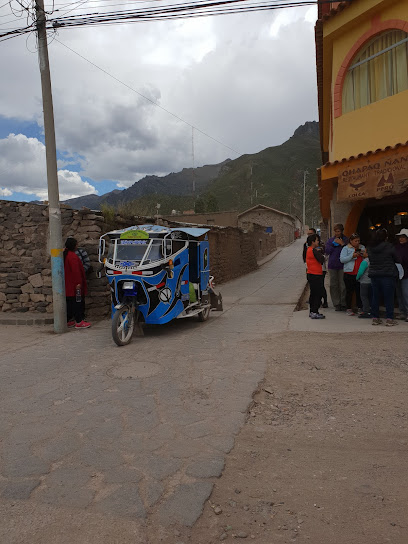
Restaurant Turístico Misti Wasi
Discover authentic Peruvian cuisine at Restaurant Turístico Misti Wasi in Chivay - A culinary journey through local flavors awaits!
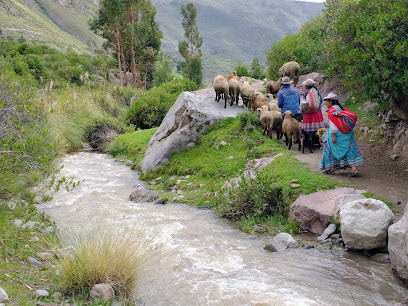
Killawasi Lodge
Discover tranquility and adventure at Killawasi Lodge in Peru's breathtaking Colca Canyon—your perfect base for exploration.
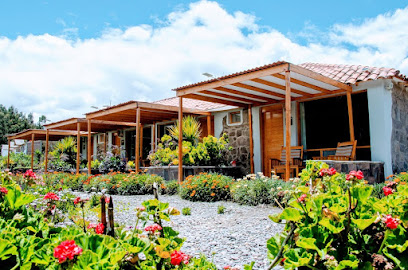
Le Foyer Colca
Experience unparalleled comfort and breathtaking views at Le Foyer Colca—a perfect retreat in Yanque near Colca Canyon.
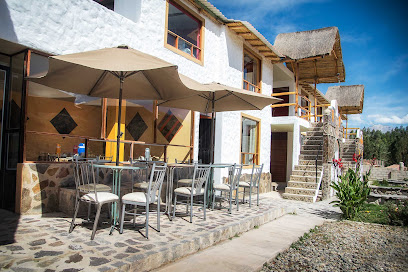
La Casa de Mamayacchi
Discover comfort and culture at La Casa de Mamayacchi in Coporaque—your gateway to the wonders of Colca Canyon.

Kuntur Wassi Colca Hotel
Discover serene comfort at Kuntur Wassi Colca Hotel in Cabanaconde - your gateway to the stunning beauty of Colca Canyon.

Markets, malls and hidden boutiques
Colca Canyon
Explore the breathtaking beauty and rich culture of Colca Canyon, one of the deepest canyons on earth, where adventure awaits at every turn.
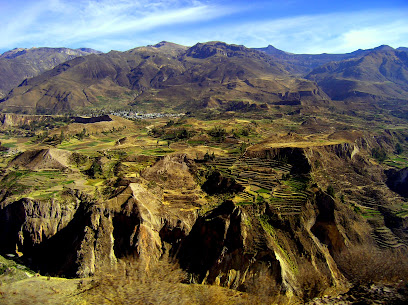
Mirador Cruz del Cóndor
Discover the stunning beauty of Colca Canyon at Mirador Cruz del Cóndor, a top observation deck with breathtaking views and soaring condors.
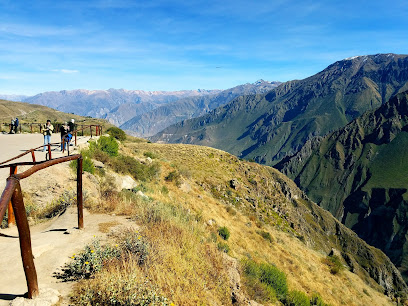
Mundo Alpaca
Explore the beauty of alpaca textiles at Mundo Alpaca, a cultural gem in Arequipa offering exquisite clothing and authentic artisan crafts.
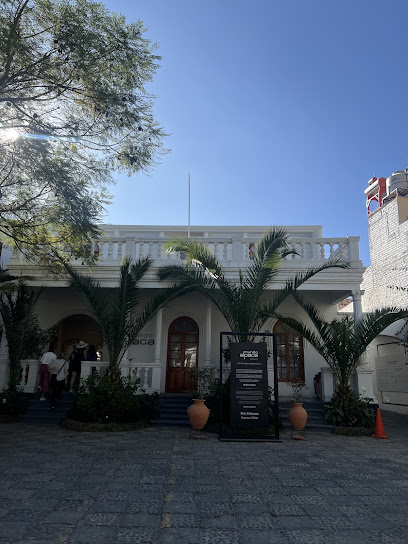
Plaza De Armas De Chivay
Experience the vibrant culture and breathtaking beauty of Plaza De Armas De Chivay, a must-visit park in the heart of the Andes.
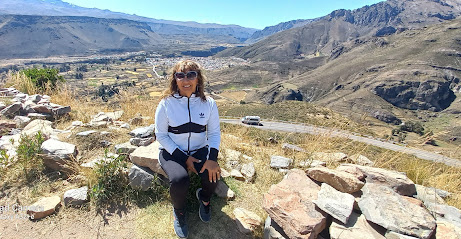
Casa Andina Standard Colca
Discover the beauty of Colca Canyon from the comfort of Casa Andina Standard Colca, where hospitality meets stunning landscapes.
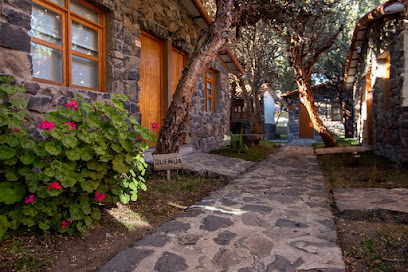
Aranwa Pueblito Encantado del Colca
Experience the magic of Aranwa Pueblito Encantado del Colca - a luxurious escape in the heart of the stunning Colca Valley.

Central Market Chivay
Discover the heart of Chivay at Central Market, where local culture, delicious food, and unique crafts come together in a vibrant atmosphere.
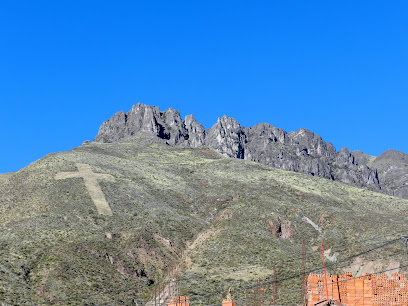
Sangalle
Explore the natural wonders and cultural richness of Sangalle, a serene park within the breathtaking Colca Canyon in Peru.
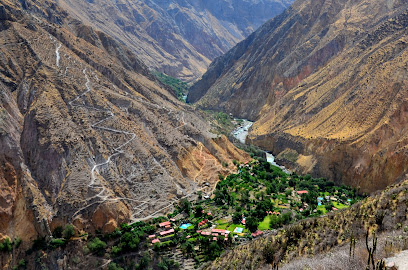
Llahuar Lodge
Experience the enchanting beauty of the Andes at Llahuar Lodge, your ideal retreat for trekking and relaxation in nature's embrace.
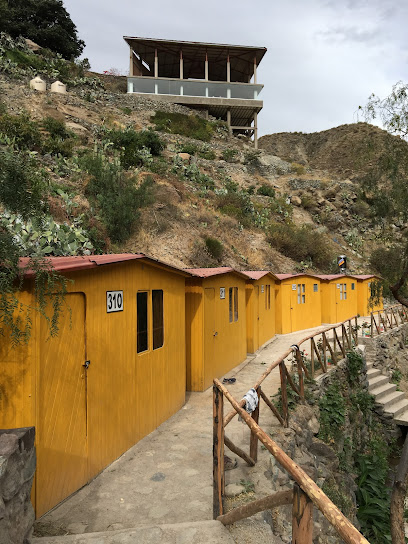
Colca Inn Hotel
Discover the serene beauty of Chivay at Colca Inn Hotel, your gateway to the breathtaking Colca Canyon.

Le Foyer Colca
Experience the charm of Yanque at Le Foyer Colca, your cozy retreat in the heart of the Colca Canyon region, blending comfort with local culture.
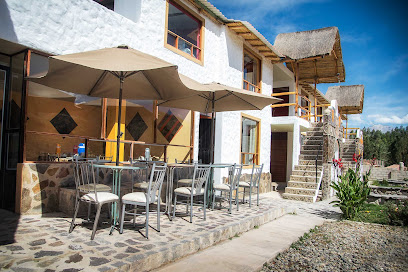
Uyo Uyo
Explore Uyo Uyo, an ancient archaeological site in Peru, offering rich history, stunning landscapes, and a glimpse into a fascinating past.

La Casa de Mamayacchi
Discover the charm of Coporaque at La Casa de Mamayacchi, where comfort meets authentic Peruvian culture amidst breathtaking landscapes.

Rio Colca
Experience the serene beauty of Rio Colca, a stunning river in Peru's breathtaking Colca Canyon, perfect for nature lovers and adventure seekers.
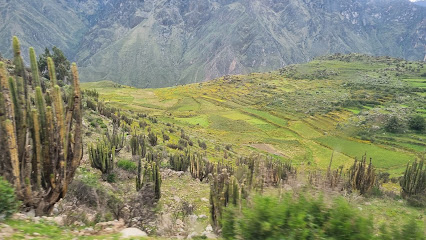
Colca Zip-Lining
Soar through the skies at Colca Zip-Lining, an exhilarating adventure set in the stunning landscapes of Colca Canyon.
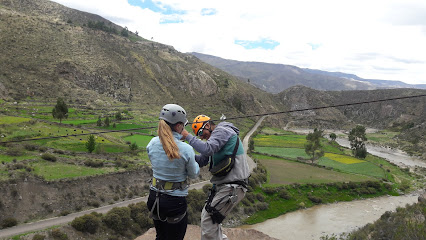
Essential bars & hidden hideouts
Colca Canyon
Discover the awe-inspiring beauty and rich culture of Colca Canyon, Peru’s breathtaking natural wonder and one of the world's deepest canyons.

Mirador Cruz del Cóndor
Discover the stunning beauty of Colca Canyon at Mirador Cruz del Cóndor, where nature's grandeur meets the thrill of condor watching.
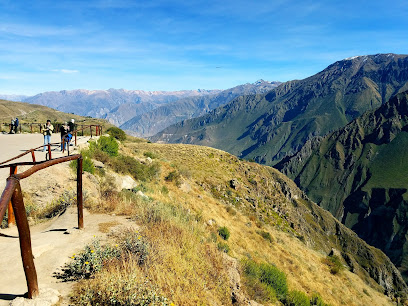
13 Monjas
Experience the vibrant flavors of Peruvian cuisine at 13 Monjas, a beloved restaurant and bar in Arequipa, offering a delightful culinary journey.
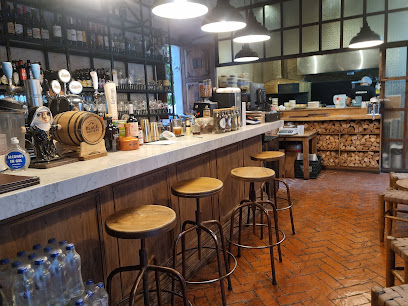
Colca Lodge Spa & Hot Springs
Discover the tranquil beauty of Colca Lodge Spa & Hot Springs, where relaxation meets adventure in the heart of Peru's breathtaking Valle del Colca.
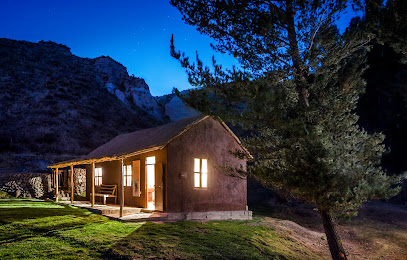
Casa Andina Standard Colca
Discover comfort and culture at Casa Andina Standard Colca, your perfect base for exploring the breathtaking Colca Canyon in Peru.
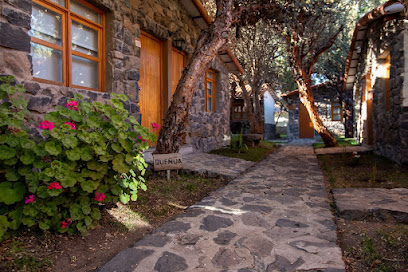
Aranwa Pueblito Encantado del Colca
Discover tranquility and adventure at Aranwa Pueblito Encantado del Colca, a stunning hotel nestled in the breathtaking Colca Canyon, Peru.

RESTAURANT URINSAYA
Experience the authentic taste of Peru at Restaurant Urinsaya, where traditional flavors meet warm hospitality in scenic Chivay.
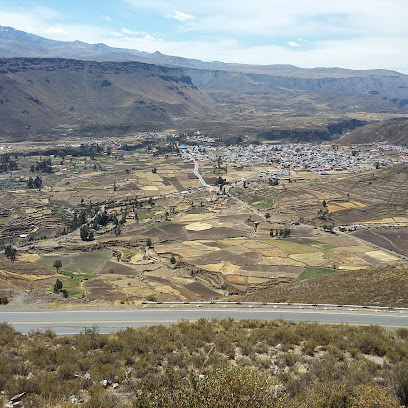
Sangalle
Experience the stunning landscapes, rich culture, and serene beauty of Sangalle, a hidden paradise in the Colca Canyon of Peru.
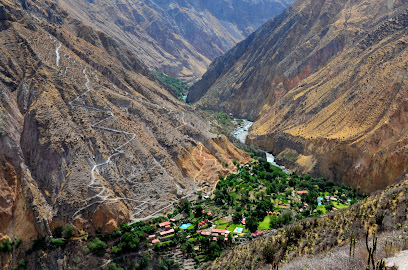
Rest LOS PORTALES DE CHIVAY
Experience the rich flavors of Peruvian cuisine at Rest Los Portales de Chivay, a top-rated restaurant for tourists in the heart of Chivay.
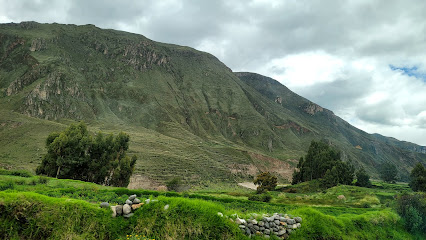
Pachamama Home
Discover the charm of Pachamama Home in Cabanaconde, your perfect base for exploring the breathtaking Colca Canyon.

Las Casitas, A Belmond Hotel, Colca Canyon
Discover the ultimate luxurious escape at Las Casitas, A Belmond Hotel in the breathtaking Colca Canyon, Peru's natural wonder.

El Refugio
Discover tranquility at El Refugio, your cozy hotel in Chivay, Peru, perfectly situated for exploring the breathtaking Colca Canyon.
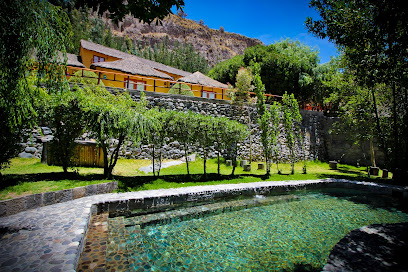
Restaurant Turístico Colca
Experience authentic Peruvian cuisine with stunning views at Restaurant Turístico Colca in the heart of Chivay.
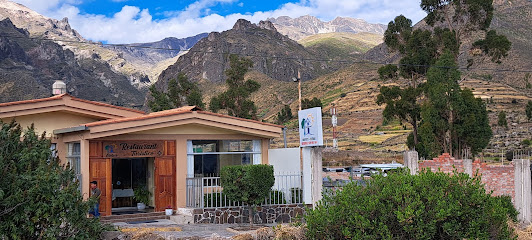
Restaurante Turístico Q'apaqñan
Experience the authentic flavors of Peru at Restaurante Turístico Q'apaqñan, a must-visit dining destination in Chivay.
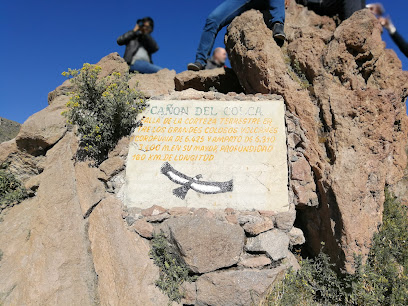
Restaurant Turístico Misti Wasi
Discover the flavors of Peru at Restaurant Turístico Misti Wasi in Chivay, where authentic cuisine meets breathtaking mountain views.
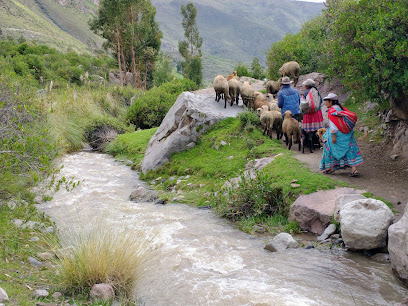
Local Phrases about Colca Canyon Trek
-
- HelloQoyllur
[koy-yoor] - GoodbyeQunaway
[koo-na-way] - YesArí
[ah-ree] - NoMana
[mah-nah] - Please/You're welcomeSulpayki
[sul-pie-kee] - Thank youSulpay
[sul-pie] - Excuse me/SorryPachamama
[pah-cha-mah-mah] - How are you?Imaynallakama?
[ee-mai-nal-lah-kah-mah] - Fine. And you?Alli kausayki. Chaypi?
[al-lee cow-sigh-kee. chai-pee] - Do you speak English?Inglis mikuyki?
[ing-lees mee-koo-ee-kee] - I don't understandMana rikunayki
[mah-nah ree-koo-nai-kee]
- HelloQoyllur
-
- I'd like to see the menu, pleaseMenuyta qawachiyki, kaypi
[men-oo-ytah kah-wah-chee-kee, kai-pee] - I don't eat meatKarni mikunki
[kar-nee mee-koon-kee] - Cheers!Qunqarayki!
[koon-kah-rai-kee] - I would like to pay, pleaseTukuyta qatiyki, kaypi
[too-koo-ytah kah-tee-kee, kai-pee]
- I'd like to see the menu, pleaseMenuyta qawachiyki, kaypi
-
- Help!Yawarani!
[yah-wah-rah-nee] - Go away!Imata wasi!
[ee-mah-tah wah-see] - Call the Police!Polisia llamay!
[poh-lee-see-ah yah-mai] - Call a doctor!Wakichi llamay!
[wah-kee-chee yah-mai] - I'm lostQaraymi
[kah-rah-ee-mee] - I'm illSickini
[seek-kee-nee]
- Help!Yawarani!
-
- I'd like to buy...Anchakuyni...
[an-cha-koo-ee-nee] - I'm just lookingKikinkichiyki
[kee-keen-kee-chee-kee] - How much is it?Imaynallataq?
[ee-mai-nal-lah-tak] - That's too expensiveAllinmiyki
[al-leen-mee-kee] - Can you lower the price?Qatipayki kashanayta munanichu?
[ka-tee-pie-kee kah-shah-nai-tah moo-nah-nee-choo]
- I'd like to buy...Anchakuyni...
-
- What time is it?Imaynataq?
[ee-mai-nah-tak] - It's one o'clockJaywan
[hai-wan] - Half past (10)Iskay pataq
[ees-kai pah-tak] - MorningPacha
[pah-cha] - AfternoonInti
[een-tee] - EveningTuta
[too-tah] - YesterdayAtipata
[ah-tee-pah-tah] - TodayKuyan
[koo-yahn] - TomorrowMaypi
[mai-pee] - 1Huk
[hook] - 2Iskay
[ees-kai] - 3Kimsa
[keem-sah] - 4Tawa
[tah-wah] - 5Pichqa
[peech-kah] - 6Suqta
[sook-tah] - 7Qanchis
[kahn-chees] - 8Pusak
[poo-sahk] - 9Isqun
[ees-koon] - 10Chunka
[choon-kah]
- What time is it?Imaynataq?
-
- Where's a/the...?Qam?
[kam] - What's the address?Imayna atipan?
[ee-mai-nah ah-tee-pan] - Can you show me (on the map)?Mapanichu?
[mah-pah-nee-choo] - When's the next (bus)?Kaypi wasi?
[kai-pee wah-see] - A ticket (to ....)Shiquy (kay ...)
[shee-kwee (kai)]
- Where's a/the...?Qam?
History of Colca Canyon Trek
-
The Colca Canyon region has been inhabited for thousands of years, with evidence of early human settlements dating back to around 6,000 BCE. The early inhabitants, known as the Collaguas and the Cabanas, developed complex agricultural terraces and irrigation systems that are still visible today. These ancient civilizations revered the Apus, or mountain spirits, and built ceremonial platforms and tombs high in the cliffs.
-
In the 15th century, the Inca Empire expanded into the Colca Canyon area, incorporating it into their vast network. The Incas introduced their advanced agricultural techniques, further enhancing the terraces and irrigation systems. They also established administrative centers and road networks, integrating the region into their empire. The Inca influence is still evident in the local culture and architecture.
-
The arrival of the Spanish in the 16th century marked a significant transformation for the Colca Canyon region. The Spanish imposed their rule and introduced Christianity, leading to the construction of colonial churches and the blending of indigenous and Spanish traditions. The region became a site of forced labor and tribute, with the local population working in mines and on Spanish estates.
-
Colca Canyon remained relatively unknown to the outside world until the 20th century. It wasn't until the 1980s that the canyon gained international attention after a group of Polish kayakers navigated the Colca River, showcasing the area's natural beauty and extreme conditions. Since then, the region has become a popular destination for trekkers and adventurers, drawn by its stunning landscapes and rich cultural heritage.
-
Today, the Colca Canyon is home to the descendants of the ancient Collaguas and Cabanas. The local communities maintain their traditional ways of life, including farming, weaving, and festivals. The annual Wititi festival, recognized by UNESCO as Intangible Cultural Heritage, is a vibrant celebration of dance and music that reflects the blending of indigenous and Spanish influences. Visitors to the region can experience these cultural traditions firsthand, gaining insight into the enduring legacy of the canyon's early inhabitants.
Colca Canyon Trek Essentials
-
Colca Canyon is located in southern Peru, about 160 kilometers northwest of Arequipa. The most common starting point for travelers is Arequipa, which has an international airport (Rodríguez Ballón International Airport). From Arequipa, you can take a bus or arrange for a private transfer to Chivay or Cabanaconde, the main towns serving as bases for trekking in Colca Canyon. The bus journey typically takes around 6 hours.
-
Once in the Colca Canyon area, local buses and colectivos (shared vans) are available to transport you between towns such as Chivay, Cabanaconde, and Yanque. For exploring remote parts of the canyon, hiring a local guide or taking organized tours is advisable. Hiking is the primary mode of transport within the canyon itself.
-
The official currency in Peru is the Peruvian Sol (PEN). Credit cards are accepted in most hotels, restaurants, and larger shops in Chivay and Cabanaconde, but it's advisable to carry cash for smaller establishments and rural areas. ATMs are available in Chivay, but it's a good idea to withdraw sufficient cash in Arequipa before heading to the canyon.
-
Colca Canyon is generally safe for tourists, but standard precautions should be taken. Avoid walking alone at night, especially in unfamiliar areas. Keep an eye on your belongings in crowded places. Petty theft can occur, so it's best to be vigilant. The towns of Chivay and Cabanaconde are typically safe, but it's always good to stay aware of your surroundings.
-
In case of emergency, dial 105 for police assistance or 116 for medical emergencies. Chivay has a medical clinic, and there are also smaller health posts in other towns. It is recommended to have travel insurance that covers medical emergencies, including evacuation if necessary. For minor health issues, there are pharmacies in Chivay where you can purchase over-the-counter medications.
-
Fashion: Do dress in layers and wear comfortable hiking gear. Avoid wearing flashy or expensive jewelry. Religion: Do respect local customs and traditions, especially when visiting churches and religious sites. Public Transport: Do be respectful and give up your seat to elderly passengers. Don't eat or drink on public transport. Greetings: Do greet people with a friendly 'Buenos días' (Good morning) or 'Buenas tardes' (Good afternoon). Eating & Drinking: Do try local delicacies, such as alpaca meat and quinoa dishes. Don't drink tap water; always opt for bottled or purified water.
-
To experience Colca Canyon like a local, visit the traditional markets in Chivay and Cabanaconde where you can buy fresh produce and handmade crafts. Engage with locals; they are often friendly and willing to share stories about their culture and traditions. Don't miss the chance to see the Andean condors at Cruz del Condor viewpoint, best viewed early in the morning. For a unique experience, consider visiting the hot springs near Chivay.
Nearby Cities to Colca Canyon Trek
-
Things To Do in Puno
-
Things To Do in Cusco
-
Things To Do in Machu Picchu
-
Things To Do in Tacna
-
Things To Do in Copacabana
-
Things To Do in Ayacucho
-
Things To Do in Arica
-
Things To Do in Ica
-
Things To Do in La Paz
-
Things To Do in Huancayo
-
Things To Do in Iquique
-
Things To Do in Lima
-
Things To Do in Cochabamba
-
Things To Do in Uyuni
-
Things To Do in Potosi









